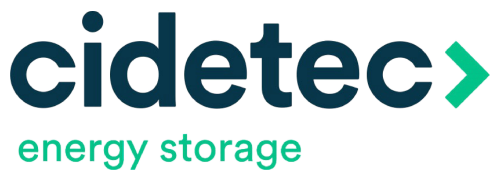 November 2022
November 2022
Antonio Gutiérrez-Pardo (and his team at CIDETEC Energy Storage) main activities in SAFELiMOVE are within Work Package 4 (Material processing and small cell design), particularly in electrode and electrolyte materials development and electrochemical characterization, towards upscaling the fabrication for their integration in Li metal solid state cells.
Antonio has been working at CIDETEC Energy Storage since September 2021, where he is a senior researcher in the Solid-State Battery Team within the Materials for Energy Unit.
What was your original motivation to become a researcher?
I love science, in particular chemistry. Since I was a child, and I have always been a curious person. I think that research is a dynamic work in which you cannot get bored. I did my PhD in Science and Technology of New Materials, focused on characterization of materials for energy storage applications. After that, I started to work in the field of solid-state batteries.
What is your (main) research area today?
My research is focused on solid-state batteries, mainly using Li metal as anode, such in SAFELiMOVE technology, but also applicable to other technologies such as anode-free batteries and/or solid-state Li ion batteries.
What is the main objective of your team in SAFELiMOVE?
CIDETEC Energy Storage is in charge of the development of high loading positive electrodes for SAFELiMOVE solid-state batteries, as well as the upscaling of such cathode and solid electrolyte and optimization of assembly process of solid state pouch cells of nominal capacity of 1-10 Ah. Recently, first generation of 1 Ah pouch cell is being developed and manufactured at CIDETEC for further delivery to different partners of the SAFELiMOVE consortium for comprehensive testing according to defined protocols.
What expertise and facilities does your ream have to meet those objectives?
Multidisciplinary CIDETEC Energy Storage team involved in SAFELiMOVE project covers different areas of expertise of the battery value chain, with special focus on material development, processing, and electrochemistry. To reach the different goals within the project, CIDETEC Energy Storage facilities include fully equipped battery R&D labs, two large dry rooms (100 m2), a semi-industrial pilot plant for electrode fabrication and pouch cell manufacturing, and electrochemical testing labs with more than 750 cycling channels, among others.
Which aspects of your research at SAFELiMOVE do you believe are the most innovative and what unique opportunities offers SAFELiMOVE to yourself and/or your organisation?
SAFELiMOVE is a great opportunity for CIDETEC Energy Storage to keep working towards advanced solid electrolytes and cathodes with adapted formulation for solid-state batteries, and further upscaling of the selected formulations in a semi-industrial pilot plant, towards the manufacturing of cells with a nominal capacity up to 1 Ah. This represents a unique opportunity to fill the gap between academia and industry on solutions devoted to the manufacture of next generation batteries guided by the market needs.
Personally, SAFELiMOVE is bringing me the opportunity to work in a collaborative project with a broad consortium of high-tech organizations with different expertise towards common challenges and goals in the battery ecosystem.
How do you see the future use of the SAFELiMOVE-results and the impact of SAFELiMOVE-project in our daily lives?
A lot of challenges still need to be overcome in the field of solid-state batteries to be fully implemented in the industry. SAFELiMOVE advances will contribute to the development of reliable safer batteries with higher energy density and longer-life cycles, accelerating the implementation of this technology in the market and our lives.
